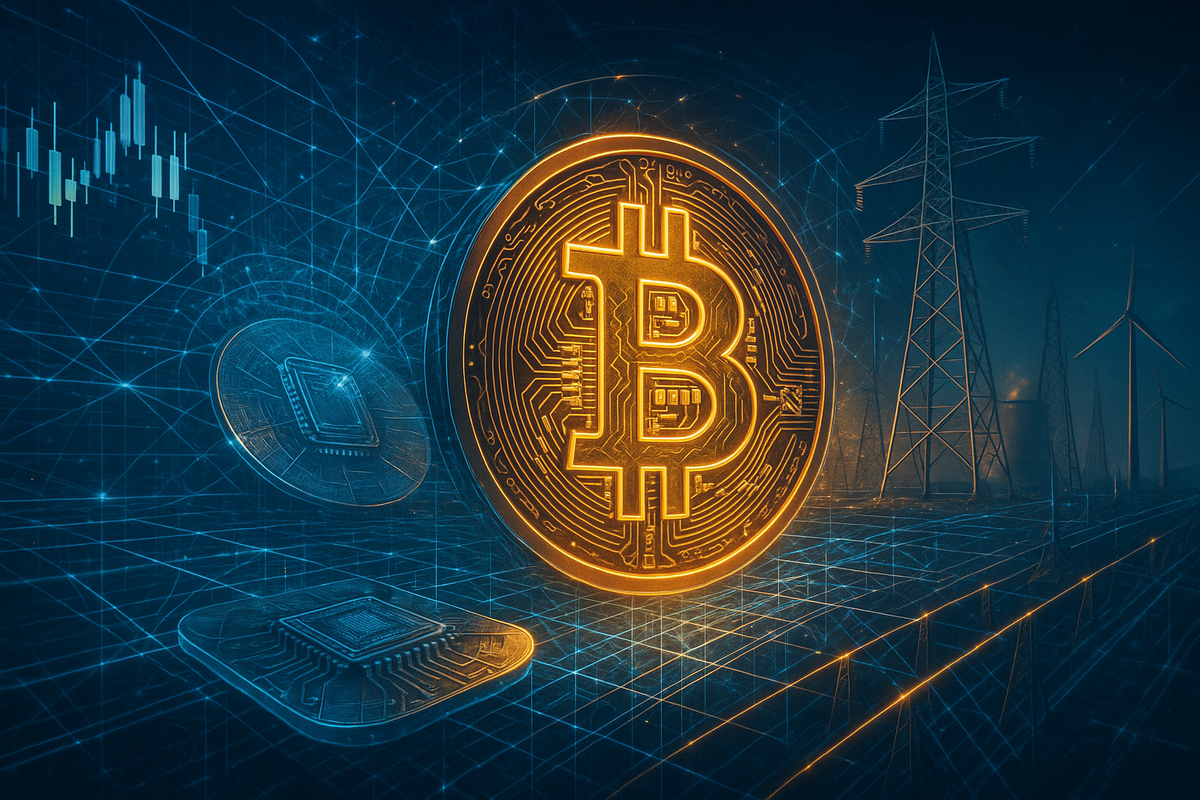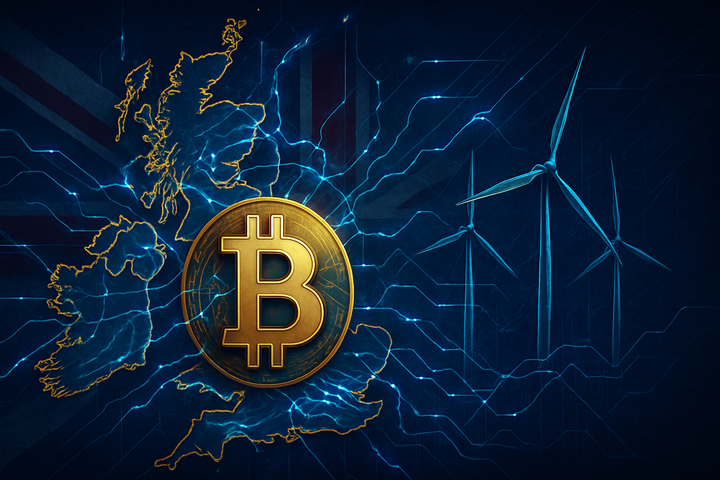AI Agents, Energy Bottlenecks, and Bitcoin Rails
In a July 10, 2025 Real Vision episode, macro investor Jordi Visser and host Raoul Pal argue that rapidly proliferating AI agents - hungry for chips and electricity - will displace mid-tier white-collar jobs and redirect trillions toward data-center infrastructure.

- My 'briefing notes' summarize the content of podcast episodes; they do not reflect my own views.
- They contain (1) a summary of podcast content, (2) potential information gaps, and (3) some speculative views on wider Bitcoin implications.
- Pay attention to broadcast dates (I often summarize older episodes)
- Some episodes I summarize may be sponsored: don't trust, verify, if the information you are looking for is to be used for decision-making.
Summary
The July 10, 2025 episode of Real Vision – The Journeyman features macro investor Jordi Visser and host Raoul Pal. They argue that rapidly proliferating AI agents - hungry for chips and electricity - will displace mid-tier white-collar jobs and redirect trillions toward data-center infrastructure. The conversation also links soaring compute demand to rising Bitcoin and stablecoin adoption, underscoring urgent needs in labor policy, energy planning, and digital-finance regulation.
Take-Home Messages
- AI Labor Shock: AI agents threaten middle-management roles, pressing governments to fund rapid reskilling.
- Power-Grid Crunch: Data-center demand outpaces current generation plans, risking regional blackouts and emissions lock-ins.
- Chip Security: Advanced semiconductor supply is concentrated, making fabrication capacity a strategic national asset.
- Parallel Finance: Stablecoins and Bitcoin offer instant settlement outside banks, reshaping liquidity and deposit bases.
- Policy Coordination Gap: Monetary easing cannot solve inequality, energy limits, or regulatory lag exposed by AI growth.
Overview
Jordi Visser describes AI agents as “helicopter intelligence” that makes cognitive labor abundant and cheap. He cites examples where agents draft research, generate code, and manage workflows once handled by junior analysts. Raoul Pal reinforces urgency by noting Google’s token usage has jumped fifty-fold in a year, signaling mainstream penetration.
Hardware and electricity have replaced algorithms as the binding constraint. Visser argues capital is pivoting toward data-center campuses and turbine orders, with gas-fired plants bridging supply until nuclear and solar scale. Both warn that unpriced peak load could destabilize regional grids and trigger politically costly outages.
Semiconductor fabrication sits at the geopolitical core of the AI boom. Concentration in a handful of Asian foundries makes chips “the new oil,” heightening supply-chain and national-security risks. Export controls and domestic subsidies surface as policy tools to diversify capacity and blunt strategic vulnerability.
A parallel financial stack is rising alongside AI. Pal contends stablecoins form an instant-settlement cash layer outside legacy banks, siphoning deposits and repricing liquidity premiums. Visser expects Bitcoin short squeezes as institutions chase scarce digital collateral, illustrating how AI-led capital cycles intertwine with decentralized finance.
Stakeholder Perspectives
- Regulators: Racing to craft agile rules for autonomous agents, stablecoins, and Bitcoin treasury use.
- Energy Utilities: Balancing surging data-center load with grid reliability and emissions targets.
- Semiconductor Foundries: Holding outsized bargaining power yet facing political pressure to diversify supply.
- Corporate Treasurers: Weighing Bitcoin and stablecoins for treasury diversification amid rising token expenses.
- Labor Organizations: Urging employer-funded upskilling to protect workers displaced by AI agents.
Implications and Future Outlook
If retraining lags agent rollout, displaced middle managers could swell underemployment and fuel populist backlash. Governments that embed lifelong-learning credits and outcome-based incentives may convert the labor shock into productivity gains. Failure would entrench inequality and erode tax bases needed for infrastructure upgrades.
Energy planners face a narrow window to ramp clean generation before gas reliance crystallizes. Jurisdictions that fast-track modular nuclear, solar, and grid-scale storage will attract AI investment without breaching climate commitments. Regions clinging to legacy grids risk rolling blackouts and capital flight.
Stablecoin rails and Bitcoin treasuries challenge central-bank control of payment velocity and reserve composition. Regulators that clarify capital treatment and disclosure rules can harness efficiency while safeguarding consumers. Absent guidance, liquidity may migrate offshore, undermining domestic monetary policy.
Some Key Information Gaps
- How can policymakers design retraining programs that match AI agent deployment speed? Targeted, scalable upskilling mitigates imminent displacement and sustains productivity.
- What mix of solar, nuclear, and gas can realistically meet five-year data-center demand growth? Accurate modeling guides capital allocation, grid upgrades, and climate targets during exponential compute expansion.
- Which strategies can diversify semiconductor fabrication beyond current geographic hubs? Supply-chain resilience reduces geopolitical risk and shields AI progress from single-point failures.
- What legal frameworks can integrate stablecoin settlements into mainstream payments without stifling innovation? Balanced regulation secures consumer protection while preserving efficiency in emerging rails.
- Which oversight mechanisms can audit autonomous-agent decisions in critical sectors? Transparent auditing ensures safety, builds public trust, and enables interdisciplinary governance.
Broader Implications for Bitcoin
Labor Market Polarization
AI agents could deepen the divide between high-skill strategic roles and low-skill services, compressing traditional career ladders. Middle-income erosion may shift tax burdens and reshape consumption patterns. Policymakers who fail to address this polarization risk political instability and slower aggregate demand.
Energy Infrastructure Race
Compute-driven power demand may accelerate an international contest to deploy modular nuclear, massive solar arrays, and advanced grids. Nations that streamline permitting and cross-border interconnects can attract AI clusters and related investment. Late movers may endure chronic capacity shortages and diminished competitiveness.
Monetary Architecture Evolution
Widespread stablecoin use and Bitcoin treasuries could erode bank deposit bases and prompt central banks to launch programmable digital cash. Hybrid public-private settlement layers may emerge, blending trust minimization with regulatory oversight. How authorities reconcile these models will influence financial stability and capital mobility.



Comments ()